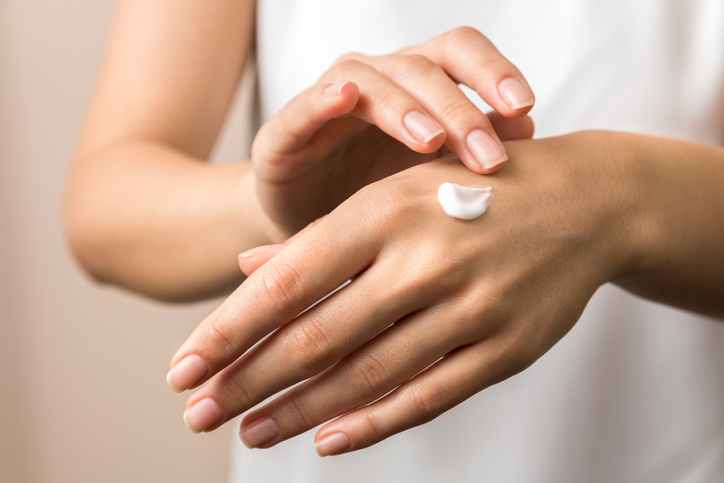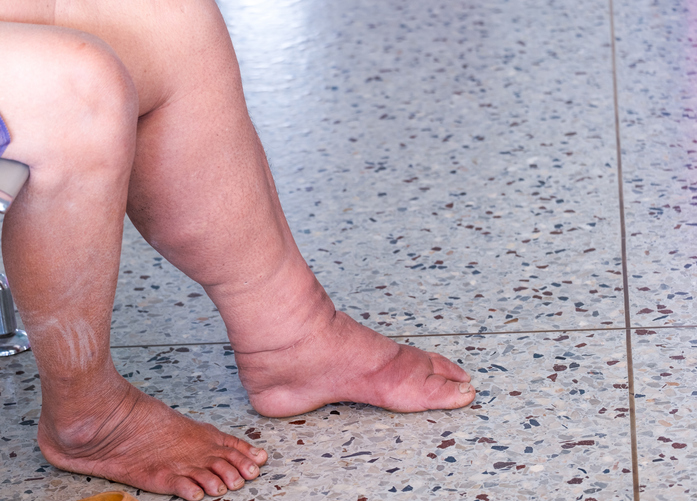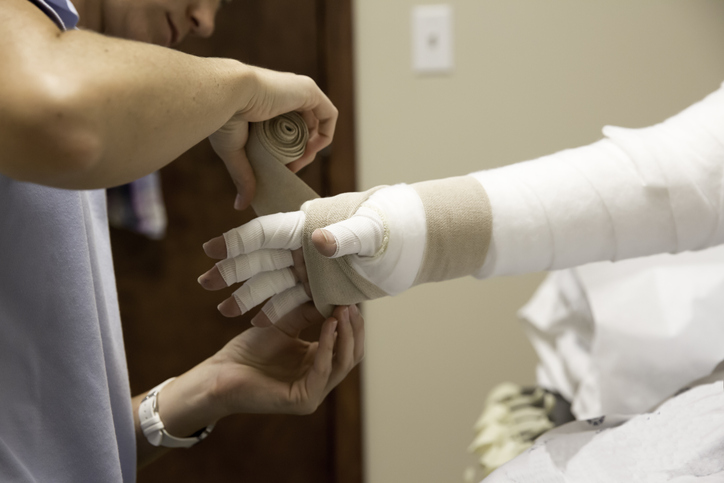Pain
At-Home Treatment Options for Lymphedema

What is lymphedema?
The lymphatic system moves fluid throughout the body to help fight off pathogens and filter waste. Lymphedema refers to the swelling that occurs when the lymphatic system is unable to adequately drain lymph fluid. Lymphedema can occur anywhere in the body but is most common in the arms and legs.
In addition to the use of conventional medical treatments for lymphedema, symptoms may also be eased with at-home treatments. These treatments include participating in physical activity, getting/doing a manual lymph massage, bandaging the affected limb, using a pneumatic compression pump, wearing compression garments, elevating the affected limb, adopting a low-sodium diet, and maintaining proper skin hygiene.
Physical activity
Physical activity stimulates the flow of lymphatic fluid. Exercises that focus on gentle muscle contractions of the affected area can be beneficial.

Manual lymph massage
Manual lymph massage differs from traditional massage. It involves manually massaging lymph vessels. Manual lymph massage encourages the flow of lymphatic fluid. Individuals should not attempt to do this without proper training from a professional massage therapist.

Limb bandaging
Bandaging the affected limb can improve lymphatic flow. If used on the arm, the bandage should be tightest at the fingers and loosen as it moves up the arm. A bandage around the leg should be tightest around the toes and loosen as it moves up the leg. It’s best to consult a therapist about how to properly bandage the affected limb.

Pneumatic compression pumps
A pneumatic compression pump involves placing a sleeve or boot that is connected to a pump over the affected area. The sleeve or boot contains a series of chambers; the pump fills the pockets inside the chambers with air and then deflates them, over and over in a specific pattern. This helps to move the lymphatic fluid from the affected limb to the trunk of the body.

Compression garments
Compression garments are long sleeves or stockings that are made to compress the arm or leg. They are especially useful when worn during periods of physical activity. Some people may require custom-made garments.

Limb elevation
Elevating the affected arm or leg can help lymphatic fluid flow from the affected limb to the trunk of the body. This reduces inflammation.

Diet
Eating a balanced, low-sodium diet can help reduce the amount of fluid retention in the body. This can help reduce the symptoms of lymphedema.

Proper skin care and hygiene
Proper skin hygiene helps reduce the risk of infections. This includes cleaning and applying lotion to the affected area on a daily basis and applying antibacterial ointment and sterile dressings to any cuts in the skin. Protecting the skin, such as wearing insect repellent to avoid bug bites and wearing sunscreen to avoid sunburns, is also beneficial.














